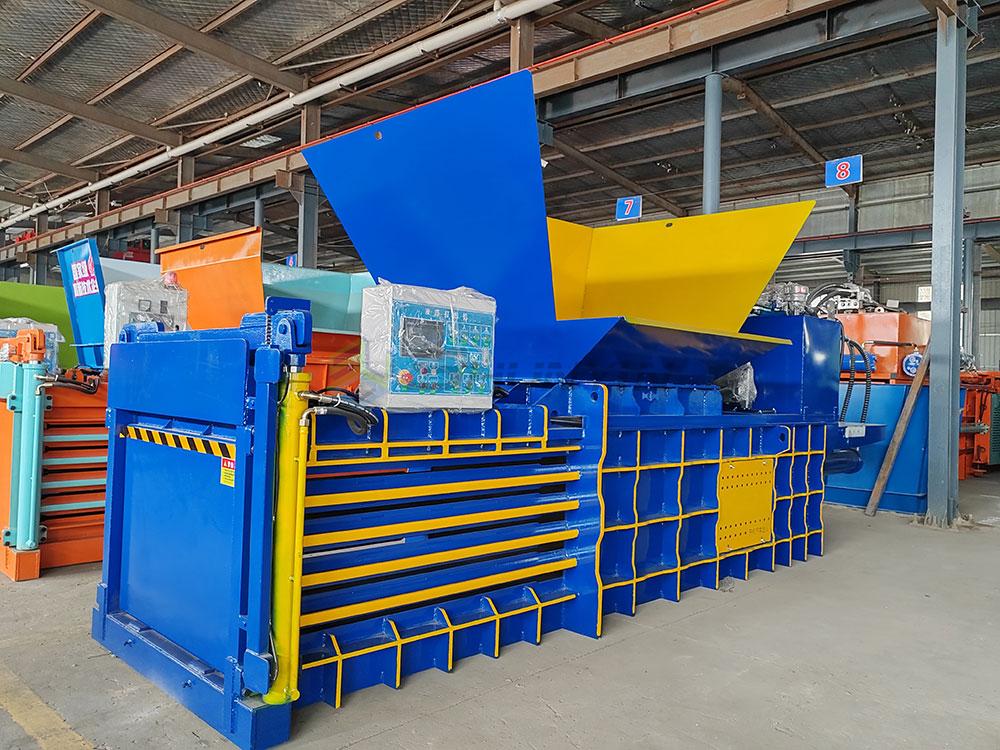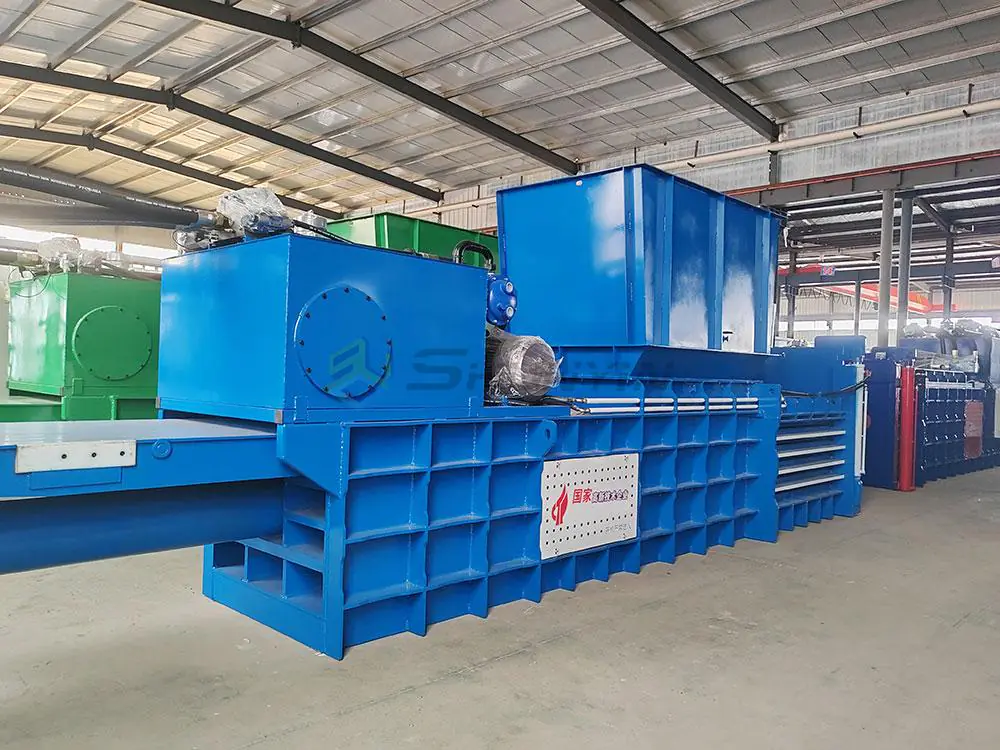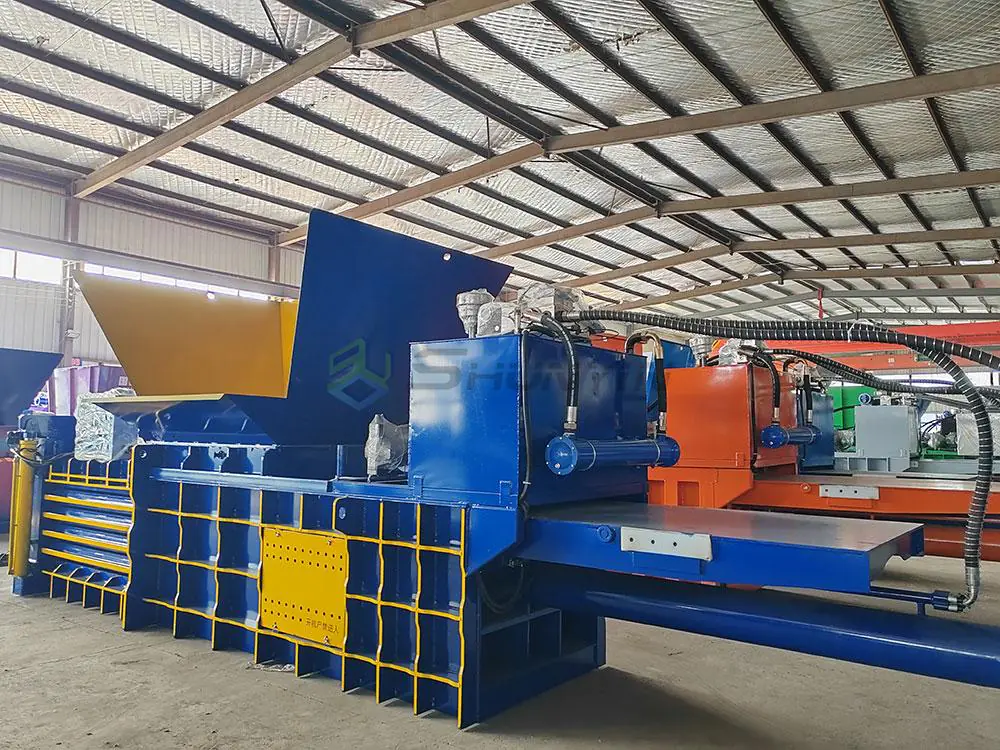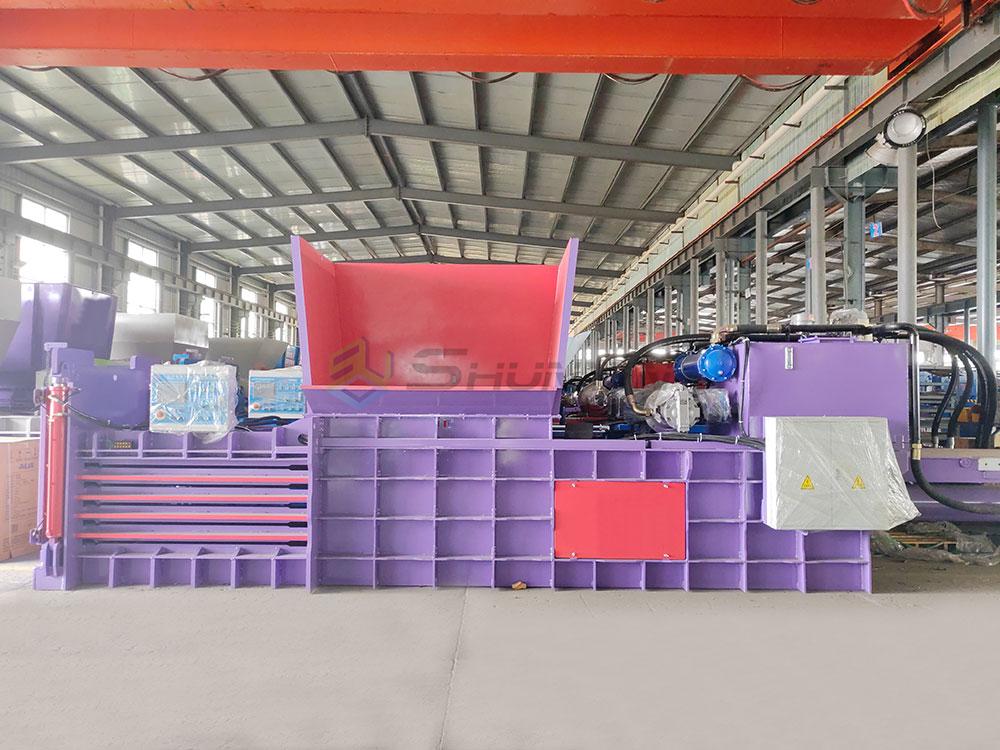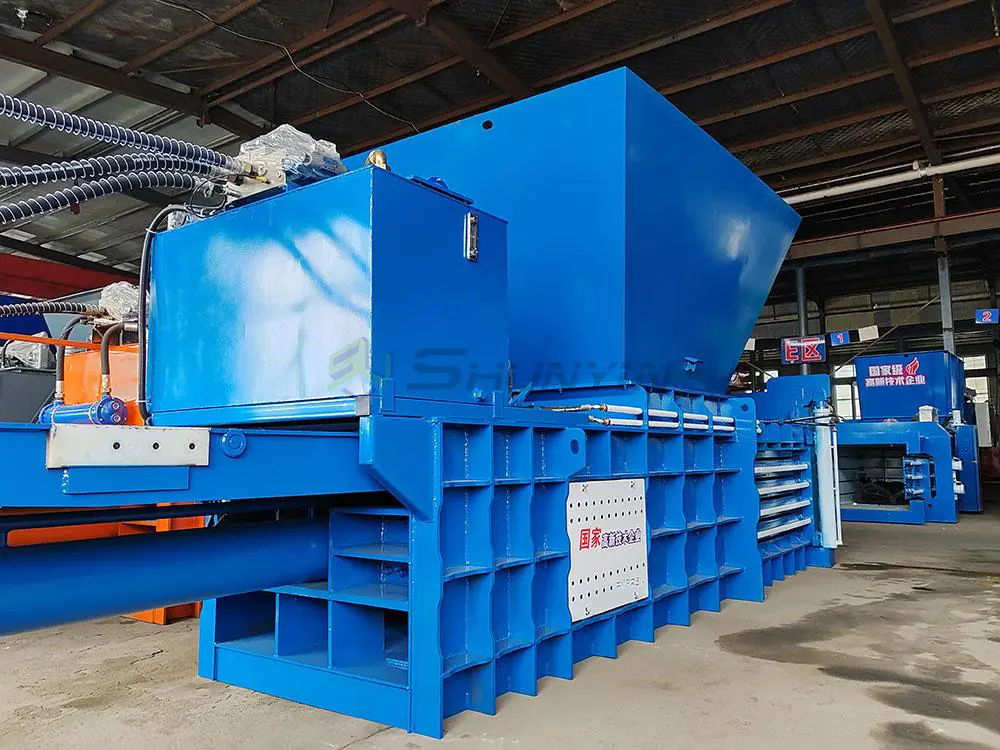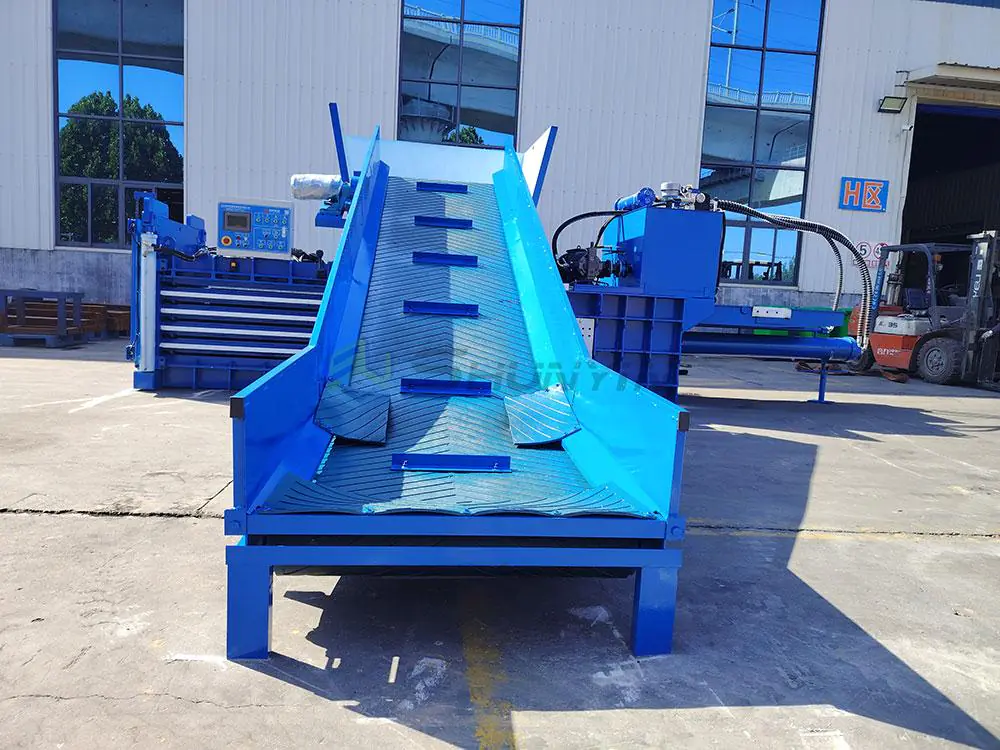
In industries where large volumes of waste are generated, optimizing production efficiency is crucial. Horizontal hydraulic balers are a game-changer for businesses aiming to streamline their recycling and waste management processes. These machines compress various types of materials, reducing storage space and making the waste handling process faster and more efficient. But how exactly can they improve production efficiency? In this article, we will explore the functionality of horizontal balers and how they contribute to enhanced productivity in various industries.
How to Improve Production Efficiency with Horizontal Hydraulic Balers:
- Optimize Bale Size and Weight: Adjust settings for efficient space usage and fewer bales.
- Reduce Cycle Times: Choose faster cycle times to increase throughput.
- Regular Maintenance: Maintain the baler to avoid breakdowns and reduce downtime.
- Automate Material Handling: Use conveyors and sorting systems to enhance efficiency.
- Train Operators: Well-trained operators ensure optimal settings and faster troubleshooting.
- Pre-sort Materials: Sort materials to prevent jams and reduce downtime.
- Monitor Performance: Use sensors to track performance and address issues quickly.
The introduction of horizontal balers into a production line can drastically reduce operational costs and increase productivity. However, understanding how they work, their principles, and the differences between vertical and horizontal models is essential for maximizing their benefits. Let’s dive into these aspects to understand their impact on production efficiency.
How does a horizontal baler work?
Horizontal balers work by using hydraulic force to compress waste materials into tightly compacted bales. The hydraulic press pushes the material into a chamber, where it is compressed to a pre-determined density. Once the bale is compacted, it is tied and ejected for storage or transportation.
A horizontal baler works by using hydraulic pressure to compress waste materials such as paper, cardboard, plastics, and metals into bales. The machine’s horizontal design allows for higher throughput and larger bale sizes, making it ideal for handling large volumes of waste.
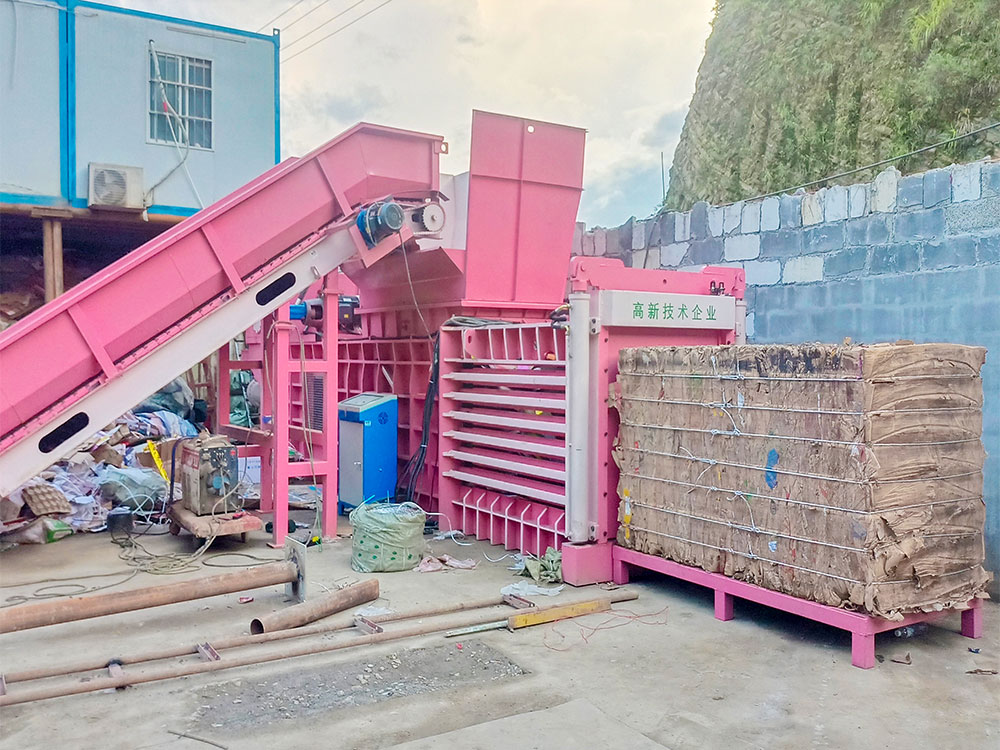
Components of a Horizontal Baler
Horizontal balers consist of several key components that make the compression process efficient:
- Hydraulic System: The hydraulic system is the powerhouse of the baler, generating the pressure needed to compact materials.
- Feeding Mechanism: This includes a conveyor belt or hopper that moves waste material into the compression chamber.
- Compression Chamber: The space where materials are compressed by the hydraulic press.
- Ejection System: Once the bale is formed, the ejection system pushes it out of the chamber and into storage or transport.
By efficiently compressing materials, horizontal balers reduce the time needed for waste handling, enabling businesses to process waste at a much faster rate.
What is the working principle of baler?
The working principle of a baler is simple yet effective: materials are fed into the machine, compressed by a hydraulic system, and then ejected as compact bales. The efficiency of a baler depends on its design, the power of the hydraulic system, and the type of material being processed.
The working principle of a baler involves the compression of waste materials using hydraulic force. The hydraulic system generates high pressure that compacts materials into dense, uniform bales. These bales are then tied and ejected for further handling.
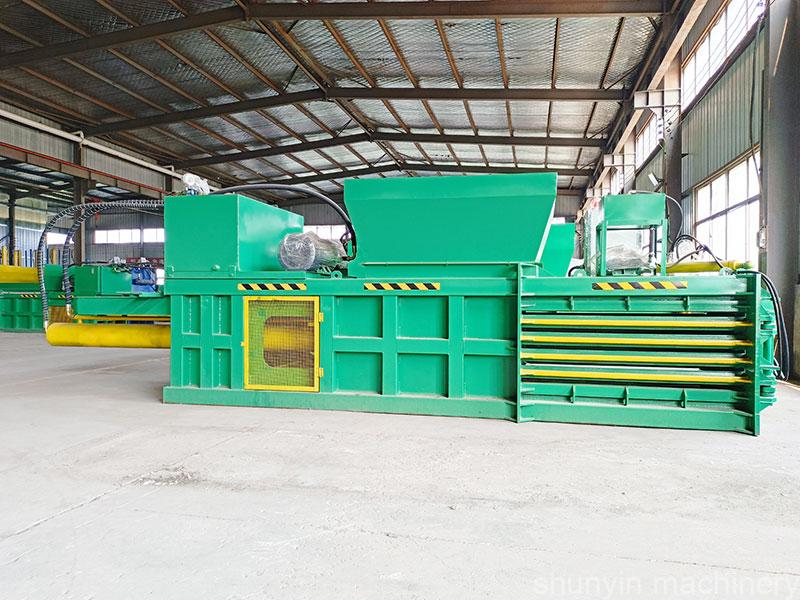
Key Elements of Baler Functionality
- Hydraulic Pressure: The core function of the baler relies on the hydraulic pressure applied to compress materials. High-pressure systems can handle more material and produce denser bales.
- Cycle Time: The time it takes for a baler to complete one cycle of compressing and ejecting a bale affects productivity. A shorter cycle time increases throughput.
- Automation: Many modern balers are equipped with automated systems that feed materials, tie bales, and even monitor the performance of the baler remotely, making the entire process more efficient.
By reducing the need for manual labor and automating key processes, balers help businesses manage waste more efficiently, thus enhancing production speed and reducing costs.
What is the difference between vertical and horizontal balers?
Both vertical and horizontal balers are used to compress waste materials, but they differ in design, capacity, and efficiency. Horizontal balers are typically more suited for industries with high waste volumes due to their larger capacity and higher throughput.
The main difference between vertical and horizontal balers lies in their design and operational capacity. Horizontal balers have a higher throughput and are capable of handling larger volumes of material. Vertical balers are more compact and are typically used for smaller-scale operations.


Horizontal vs. Vertical Baler Comparison
Here’s a comparison of horizontal and vertical balers based on key factors:
| Feature | Horizontal Baler | Vertical Baler |
|---|---|---|
| Capacity | Higher, handles larger volumes | Lower, suitable for small operations |
| Size of Bales | Larger, denser bales | Smaller bales |
| Efficiency | Faster throughput, less labor | Slower, more manual intervention |
| Material Types | More versatile (cardboard, plastics, metals) | Mainly used for paper and cardboard |
| Space Requirement | Larger, requires more floor space | Compact, ideal for smaller spaces |
Horizontal balers excel in large-scale operations where fast and efficient waste processing is required, while vertical balers are better suited for smaller operations with limited space.
What is a waste baler?
A waste baler is a machine designed to compress waste materials such as paper, cardboard, plastics, and metal into compact bales. These bales are easier to handle, store, and transport, making the waste management process more efficient. Waste balers are used in industries like recycling, manufacturing, and distribution centers to reduce waste volume and optimize waste handling.
A waste baler is a machine used in industries to compress waste materials into bales for easier storage and transportation. Waste balers help businesses reduce waste volume, save space, and improve recycling processes.

Types of Waste Balers
- Manual Balers: These require more labor to operate, often used in smaller-scale operations.
- Semi-Automatic Balers: These balers require less manual intervention and are suitable for medium-scale operations.
- Fully Automatic Balers: These balers are highly efficient, processing large amounts of material with minimal human intervention. They are typically used in large-scale industrial settings.
Waste Baler Efficiency
The efficiency of a waste baler can be measured by the following factors:
- Throughput: The amount of material processed per hour or per cycle. Horizontal balers are usually faster and more efficient in this regard.
- Compaction Ratio: The ratio of the original volume of waste to the final bale size. Higher compaction ratios lead to more efficient storage and transport.
- Energy Consumption: More efficient balers consume less energy, reducing operating costs in the long run.
By improving efficiency in waste processing, waste balers help businesses streamline operations, reduce costs, and contribute to a more sustainable approach to waste management.
Conclusion
Horizontal hydraulic balers are an essential tool for businesses looking to improve production efficiency in waste management. By understanding how these machines work, their principles, and the differences between horizontal and vertical models, businesses can make informed decisions about the best baler for their operations. With features like hydraulic compression, automation, and high throughput, horizontal balers provide the efficiency needed to process large volumes of waste quickly, saving time, space, and labor costs while improving overall production efficiency.


